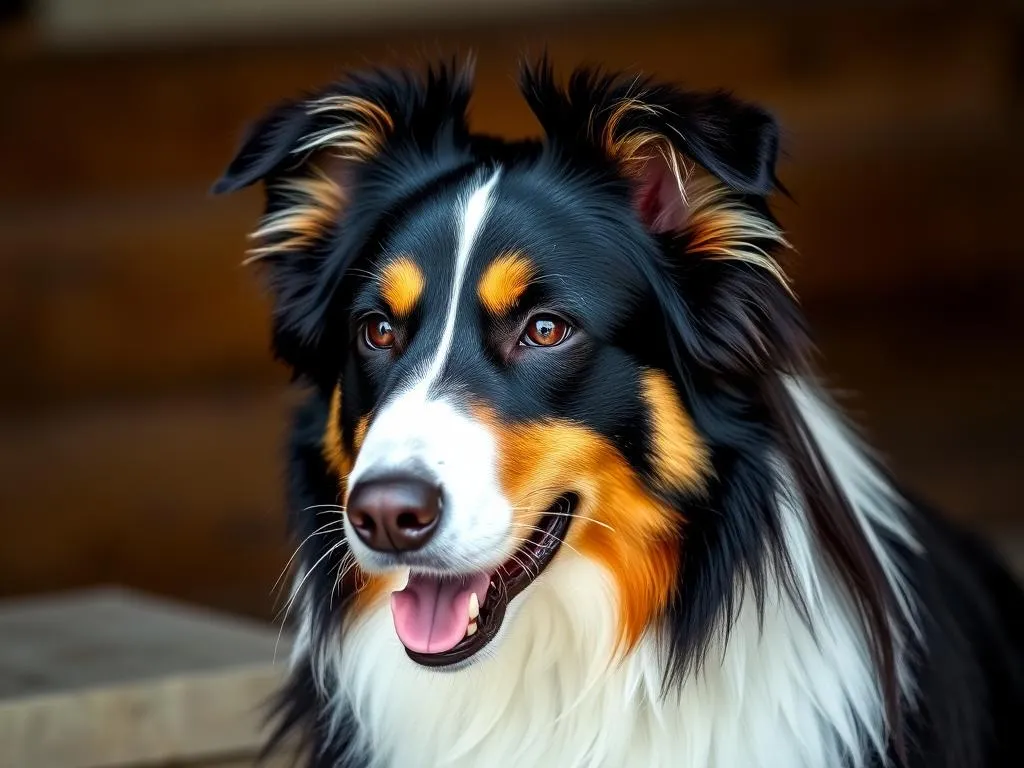
Introduction
Understanding different dog breeds is essential for anyone considering bringing a canine companion into their home. Each breed has unique characteristics, behaviors, and care requirements that can greatly influence the experience of dog ownership. In this article, we will focus on two remarkable breeds: the Border Collie and the Shetland Sheepdog.
The purpose of this article is to educate readers about the traits, care needs, and training methods associated with these two breeds. By providing detailed insights, we aim to assist potential dog owners in making informed decisions regarding their future furry friends.
Understanding Dog Breeds
What is a Dog Breed?
A dog breed is a specific group of domestic dogs with particular characteristics that distinguish them from other dogs. These characteristics can include physical attributes, such as size and coat type, as well as behavioral traits that are often influenced by genetics. Understanding the characteristics of different breeds is crucial for potential dog owners, as it helps them choose a breed that aligns with their lifestyle and preferences.
The Role of Genetics in Dog Breeds
Genetics play a significant role in determining a dog’s behavior and physical traits. Responsible breeding practices ensure that desirable traits are passed down while minimizing the risk of hereditary health issues. Understanding the genetic background of a breed can provide insights into their temperament, intelligence, and potential health problems.
Overview of Border Collies
History and Origin
The Border Collie is renowned for its exceptional herding abilities and intelligence. Originating from the border region between England and Scotland, this breed was developed primarily for herding sheep. The term “collie” is derived from the Scottish word for sheepdog, and the breed’s name reflects its geographical roots.
Physical Characteristics
Border Collies are medium-sized dogs, typically weighing between 30 to 45 pounds and standing about 18 to 22 inches tall at the shoulder. They have a well-proportioned body and a double coat that can be either smooth or rough. Their coat colors vary widely, including black, red, blue merle, and sable, often with distinctive white markings.
Temperament and Behavior
Border Collies are known for their intelligence and trainability, often ranking among the most intelligent dog breeds. They are energetic and require regular mental and physical stimulation. Their herding instincts can lead to behaviors such as chasing and nipping, which can be managed through consistent training and socialization.
Health Considerations
Common health issues in Border Collies include hip dysplasia, epilepsy, and eye disorders such as progressive retinal atrophy. The average lifespan of a Border Collie is between 12 to 15 years. Regular veterinary check-ups and preventive care are essential for maintaining their health.
Overview of Shetland Sheepdogs
History and Origin
The Shetland Sheepdog, often affectionately referred to as the “Sheltie,” originated in the Shetland Islands of Scotland. Initially bred as a small herding dog to manage sheep and other livestock, the Sheltie has evolved to be a beloved companion dog. Their friendly nature and intelligence make them suitable for various roles, including therapy and assistance dogs.
Physical Characteristics
Shetland Sheepdogs are small to medium-sized dogs, typically weighing between 20 to 40 pounds and standing about 13 to 16 inches tall. They have a thick double coat that is typically longer around the neck and chest, giving them a distinctive mane-like appearance. Color variations include sable, black, and blue merle, often with white markings.
Temperament and Behavior
Shelties are known for their affectionate and gentle nature. They are highly trainable and often excel in obedience and agility competitions. Their intelligence is matched by their eagerness to please, making them excellent family pets. However, they can be reserved around strangers, requiring proper socialization to become well-adjusted.
Health Considerations
Common health issues in Shetland Sheepdogs include hip dysplasia, eye problems, and skin conditions. The lifespan of a Sheltie ranges from 12 to 14 years, similar to that of Border Collies. Regular veterinary care and a healthy diet are crucial for their well-being.
Comparison of Border Collies and Shetland Sheepdogs
Physical Differences
In terms of size, Border Collies are generally larger and more robust than Shetland Sheepdogs. While both breeds have double coats, the Border Collie’s coat can be either smooth or rough, whereas Shelties have longer hair, especially around the neck and chest. Grooming requirements also differ; Shelties may require more frequent brushing to prevent matting due to their longer fur.
Temperament Comparison
Both breeds are intelligent and trainable, but their temperaments can vary. Border Collies are typically more energetic and may require more exercise and mental stimulation. Shelties, while also active, tend to be more laid-back and affectionate, making them great family pets. Their reserved nature around strangers can differ from the Border Collie’s more outgoing demeanor.
Training and Exercise Needs
Border Collies require extensive exercise and thrive on activities like agility training, herding, and obedience work. They benefit from a structured routine that challenges both their physical and mental capabilities. On the other hand, Shetland Sheepdogs also need regular exercise but can be satisfied with daily walks and playtime. Both breeds respond well to positive reinforcement training methods.
Health and Lifespan
When comparing health issues, both breeds are prone to similar conditions such as hip dysplasia and eye disorders. However, Border Collies may be more susceptible to certain genetic issues due to their popularity in competitive herding. Lifespan expectations are similar, with both breeds typically living between 12 to 15 years.
Choosing the Right Breed for You
Lifestyle Considerations
When choosing between a Border Collie and a Shetland Sheepdog, it’s essential to assess your lifestyle and activity level. Border Collies require a high level of physical and mental stimulation, making them ideal for active individuals or families. In contrast, Shelties may be better suited for families seeking a loyal companion that enjoys playtime but doesn’t require as much vigorous exercise.
Preparing for Ownership
Before bringing a dog home, it’s crucial to prepare by gathering necessary supplies such as food, a bed, toys, and grooming tools. Understanding the commitment involved in dog ownership—including time for training, exercise, and socialization—is vital for ensuring a successful relationship with your new pet.
Adoption vs. Breeding
Both adoption and breeding have their pros and cons. Adopting from a shelter can provide a loving home to a dog in need, while buying from a reputable breeder allows for better knowledge of the dog’s lineage and health. Researching breeders or shelters and considering your own preferences and values is essential in making this decision.
Caring for Your Border Collie or Shetland Sheepdog
Nutrition
Proper nutrition is vital for the health of both Border Collies and Shetland Sheepdogs. A balanced diet rich in high-quality protein, healthy fats, and essential nutrients will help maintain their energy levels and overall health. Consult with a veterinarian to determine the best diet for your specific dog, taking into account their age, size, and activity level.
Grooming
Grooming needs vary between the two breeds. Border Collies may require less frequent grooming, especially if they have a smooth coat. However, rough-coated Border Collies should be brushed regularly to prevent matting. Shetland Sheepdogs, with their longer coats, should be groomed at least once a week to keep their fur healthy and free of tangles. Seasonal shedding may require more frequent grooming during certain times of the year.
Training and Socialization
Early training and socialization are crucial for both breeds to help them develop into well-rounded companions. Positive reinforcement training techniques are highly effective for Border Collies and Shetland Sheepdogs, as they respond well to rewards and praise. Engaging them in training classes or socialization groups can foster good behavior and help them adapt to various environments and situations.
Frequently Asked Questions (FAQs)
Common Questions About Border Collies
Many potential owners wonder about the energy levels of Border Collies. Yes, they are high-energy dogs that require ample exercise and mental engagement. Another common concern is their herding behavior; if unchecked, they may attempt to herd children or other pets.
Common Questions About Shetland Sheepdogs
Shelties are often questioned about their barking tendencies. They are known to be vocal, especially if they sense something unusual in their environment. Additionally, potential owners may wonder if they are good with children; Shelties typically do well in family settings, given proper socialization.
General Questions About Dog Ownership
For first-time dog owners, understanding the commitment involved in raising a dog is crucial. This includes regular exercise, grooming, and vet visits. Researching breed-specific needs and being prepared for the responsibilities of dog ownership will lead to a more rewarding experience.
Conclusion
In summary, both Border Collies and Shetland Sheepdogs offer unique qualities that can enrich the lives of their owners. While Border Collies are energetic and highly trainable herders, Shetland Sheepdogs provide gentle companionship with a friendly disposition.
Choosing the right breed is essential for a fulfilling companionship, and responsible dog ownership is vital for ensuring a healthy and happy life for your furry friend. Understanding the characteristics, needs, and behaviors of these breeds will help you make an informed decision and enjoy many years of love and loyalty.









